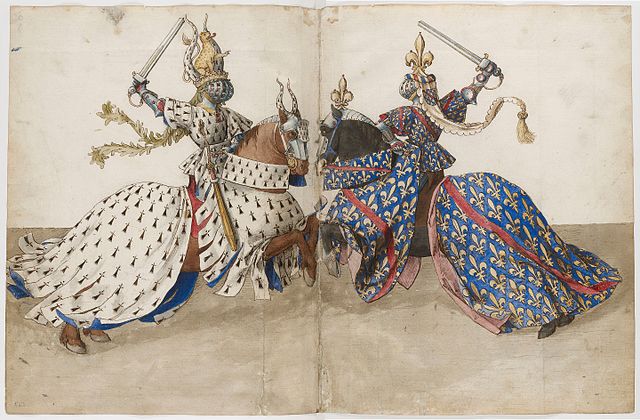Caparisoned_horse
Caparison
Cloth covering laid over a horse or other animal for protection and decoration
A caparison is a cloth covering laid over a horse or other animal for protection and decoration. In modern times, they are used mainly in parades and for historical reenactments. A similar term is horse-trapper.[1] The word is derived from the Latin caparo, meaning a cape.[2]
This article needs additional citations for verification. (June 2020) |
